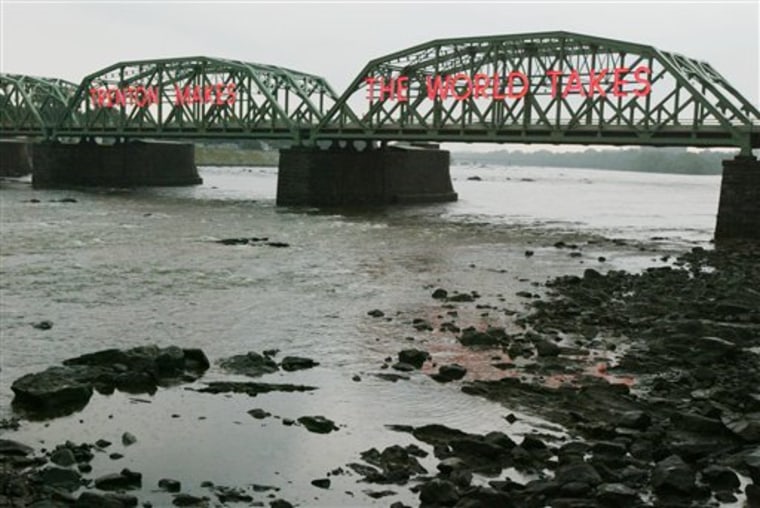These are transformational times in a nation rooted for a century in a life of lunch buckets, calloused hands and belching smokestacks. That life is being upended and it's on to new, more ephemeral things.
America doesn't build like it used to. Services R Us.
The auto executives and labor bosses who came to Washington pleading for a bailout represented a waning industrial age that delivered decent wages, good benefits and stable employment for millions, over generations.
They could not help but look like yesterday's men, grasping for a chance at tomorrow.
They stood not just for a gasping industry or a shrunken labor movement but for America's wrenching transition from the familiar ways of putting food on the table and kids through college.
How many people do you know who go to work each day and make something you can hold or touch?
In most places, probably not many.
Not even in Trenton, N.J., where the bold sign on a railroad bridge boasts "Trenton Makes, the World Takes," harking back to when it made rubber, wristwatches, parachutes, linoleum, armaments, glassware, fine china, toilets, cars, wall plaster, farm tools, mattresses and cigars.
Now it makes policy and bureaucracy, mostly employing people in state and local government. In that state, one worker in 10 makes something, down from one in two in 1950.
'Like a ton of rocks'
So it goes across the country. Not quite one worker in 10 is in manufacturing.
The swagger of the American blue-collar worker has been gone for so long that books about that endangered species have turned yellow at the edges.
"A Ford or a U.S. Steel is there, on the ground, like a ton of rocks," the Chicago labor lawyer Thomas Geoghegan wrote in a tough-love ode to the labor movement.
His book, "Which Side Are you On?", is more than 15 years old. Much rock has become rubble since then.
Even then — before "Made in China" became the norm — there was a sense that the times of little pink houses were a-changing.
"Automation always seemed to lead to more jobs, somewhere, at some point," Geoghegan wrote. "Now it seems to lead nowhere. Workers used to think: It's OK, it's leading to the next industrial revolution.
"But now the word on the street is: There isn't going to be a next industrial revolution."
To be sure, America still makes more than Americans think it does. The products are less visible, unless you've got a semiconductor on your holiday list.
American exports
The biggest export in recent years has been commercial aircraft and parts, worth over $100 billion last year. Next comes autos and auto parts, worth $80 billion, both from domestic and foreign factories in the U.S. Earth-moving equipment and MRI scanners are other examples of high-end products still made in the USA.
U.S. manufacturers make more with fewer people. Some 3 million manufacturing jobs — nearly one in four — have been lost since 2000 while productivity has gone up. The service sector drives 80 percent of the economy. That's schlepping fast food, processing information technology and a lot in between.
The industrial economy was built by bombastic corporate and union leaders working together and at head-butting odds during decades of negotiation, strikes and bloody confrontation.
Now everyone hangs on to a swiftly tilting planet, a mix of the known and unknown.
Changing worlds
The sociologists Robert and Helen Lynd described it this way: "A citizen has one foot on the relatively solid ground of established institutional habits, and another foot fast to an escalator erratically moving in several directions at a bewildering variety of speeds."
They wrote that in the 1920s, while studying life in Muncie, Ind., when America was entering the industrial age it now appears to be exiting, job by outsourced job, industry by archaic industry.
The auto and labor leaders of today came to Washington cowed and needy, no bombast to be heard.
The company executives were shamed by lawmakers into driving from Detroit instead of flying in their corporate jets.
The United Auto Workers officials were funneled into a make-or-break meeting where Republicans from states that host foreign carmakers with nonunion work forces demanded sharp wage concessions from the Detroit crowd as a condition for the rescue.
The union said no, like the old days.
More | |
